Compendium
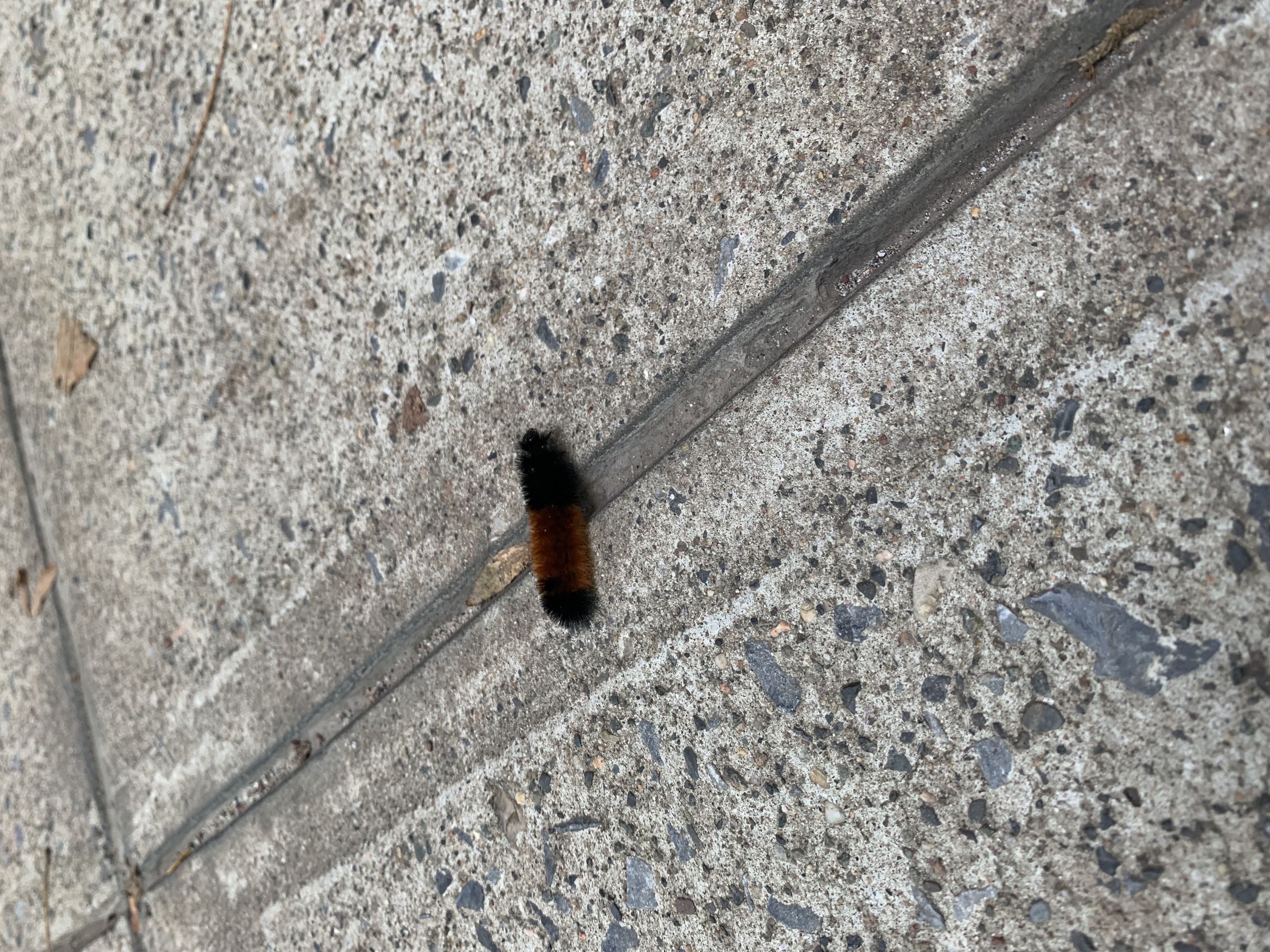
Wooly Bear Catepillar, Pyrrharctia isabella
Size:
1.5 - 3.0 inches
Date of Observation:
9/30/23 - mid afternoon. Context:
The caterpillar was crossing the sidewalk as I was walking to my apartment. The caterpillar was found relatively near some green space in the development. It was crawling west away from the southernmost building and towards a fenced off green area.
Research Notes:
These caterpillars become isabella tiger moths after their metamorphosis. There is folklore associated with this caterpillar. The width of the orange band is associated with the length and harshness of winter; the wider the orange band, the milder the winter. This specimen suggests a 50/50 harsh-to-mild forecast for this winter! 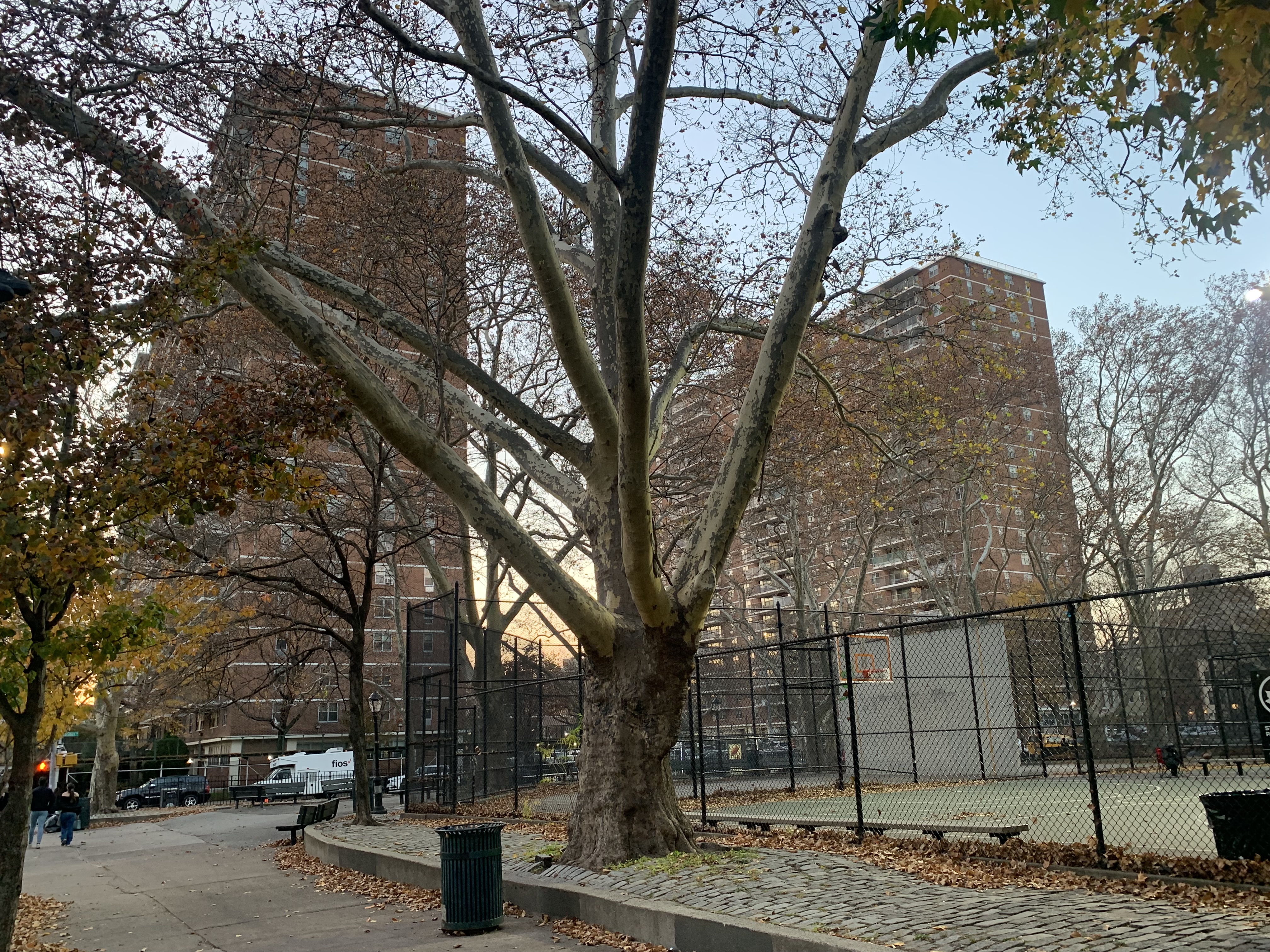 London Planetree, Platanus x acerifolia
London Planetree, Platanus x acerifoliaSize:
Between 40 and 50 feet tall. The diamater of the trunk is likely between 4 and six feet wide. Date of Observation:
11/19/2023 - late afternoon/early evening.Context:
London planetrees make up the majority of trees used in landscaping in the Lindsay Park and Sternberg Park footprints. Research Notes:
The London plane is a hybrid of the sycamore and Asian planetree. They are sturdy trees that can tolerate aklaline soils, occasional droughts and floods. These deciduous are known for their peeling bark and according to the Central Park Conservancy, was “cherished” by Robert Moses.
Ganoderma, Ganoderma lucidum
Size:
Each section of the fungus is at most an inch in width and a few inches (3-9) in length. Date of Observation:
10/20/23 - Afternoon.Context:
This fungi grows on and out of two London planetrees that are located in Sternberg Park. There were not any other examples of this found beyond the two trees in Sternberg Park. Research Notes
This polyphore fungi is frequently used as a medicine in Asian communities and was known as “God’s herb” in ancient China.
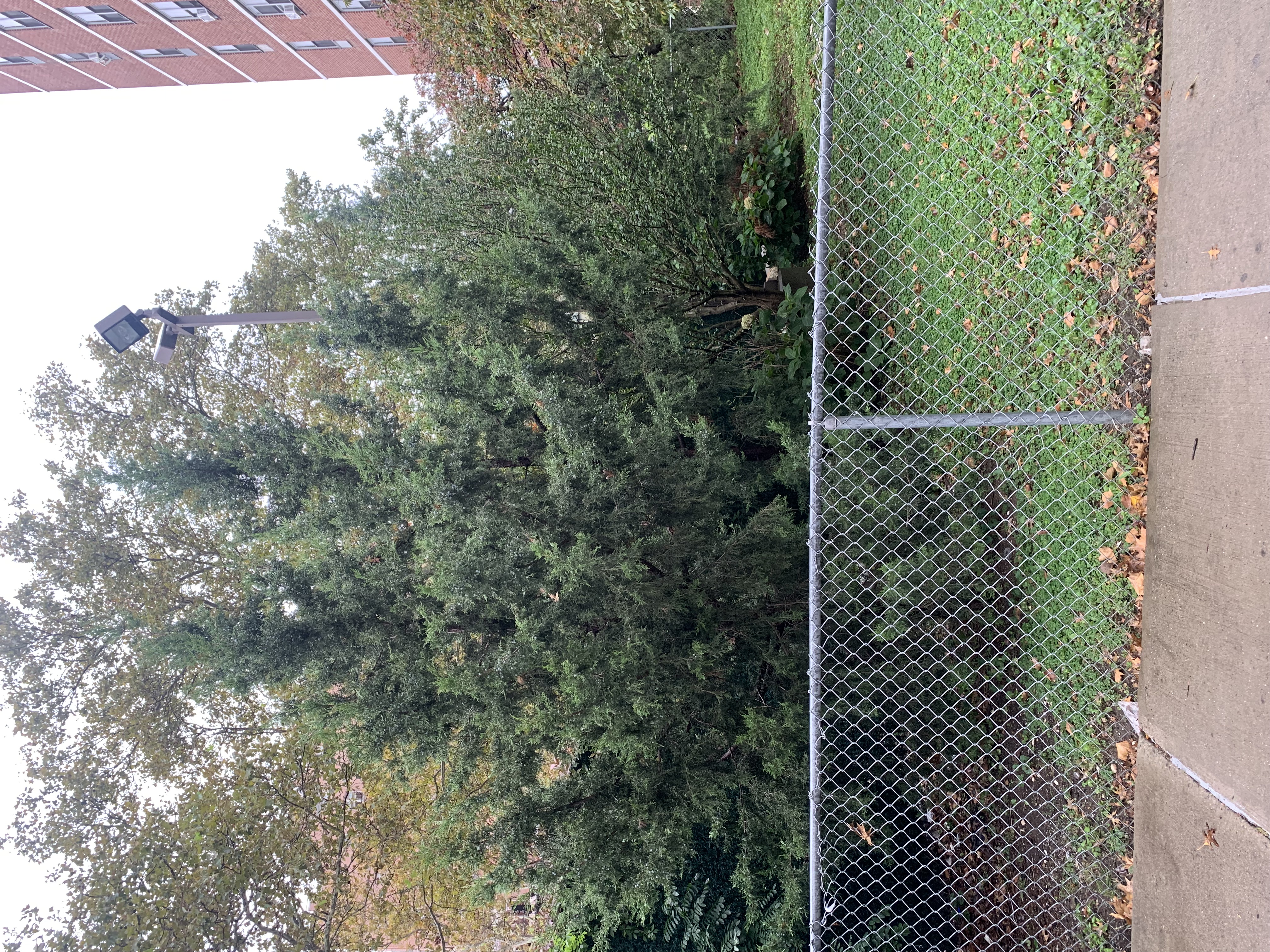
Yew, Taxus baccata
Size:
The is between 15 and 25 feet tall. At its widest point, these yew are between 6 and 9 feet across. Date of Observation:
10/20/23 - Afternoon. Context:
Yews are only found in one corner of Lindsay Park, near a large trash compacter at the southern end of the development. Research Notes:
The yew is native to Europe and is associated with death and doom. Despite this connotation, it provides ecosystem services for animals by providing shelter. Yews are coniferous but bear fruits instead of cones.
European Nettle Tree (a/k/a European hackberry), Celtis australis
Size:
This is a large tree, roughly 30 feet in height. Date of Observation:
10/23/2023 - Mid-day.Context:
This tree is used in Landscaping primarily in Sternberg Park. Research Notes
Native to the Mediterranean, these are sturdy trees that are frequently used as street trees
Hedge mustard, Sisymbrium officinale L.
Size:
Comparable to a large blade of crab grass. Hedge mustard was found in clumps and bunches in the green corridor. They appeared as Date of Observation:
10/23/2023 - Mid-day.Context:
Found in the edge spaces of the “green corridor” on Leonard street between Boerum and Moore streets.Research Notes
A ruderal and edible plant. It is most frequently found near roads and is popular in salads in Europe.
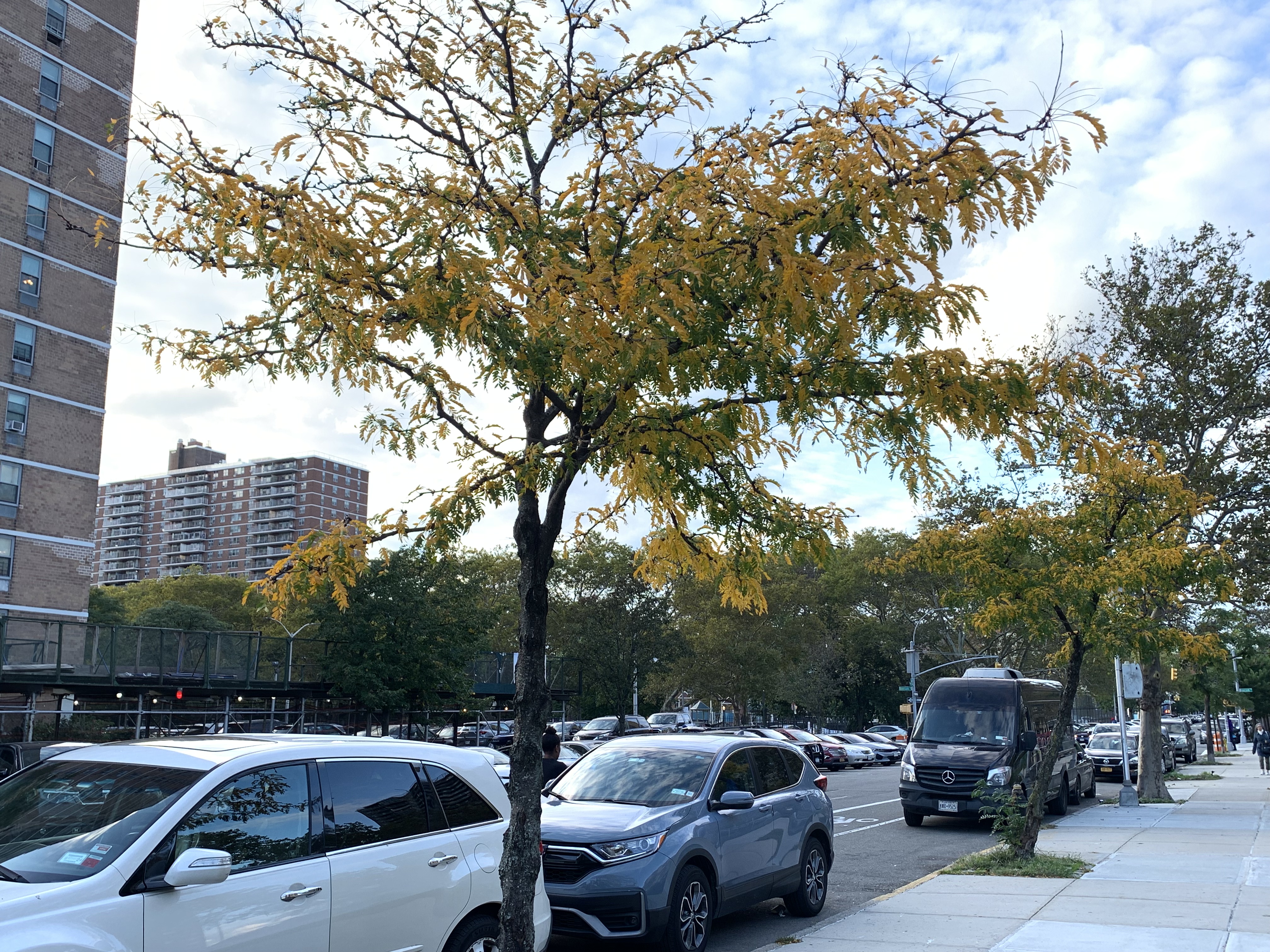
Honey locust, Gleditsia triacanthos
Size:
The tree is around 15 feet tall and between 6 and 8 feet in width at its widest. Date of Observation:
10/23/2023 - Mid-day.Context:
This tree is used in landscaping along Leonard street in the “green corridor.” Research Notes
The honey locust is native to the eastern US. Its seed pods provide food for squirrels and birds. These trees are commonly used as street trees because it can tolerate akaline and clay soils, road salts, and occasional flooding.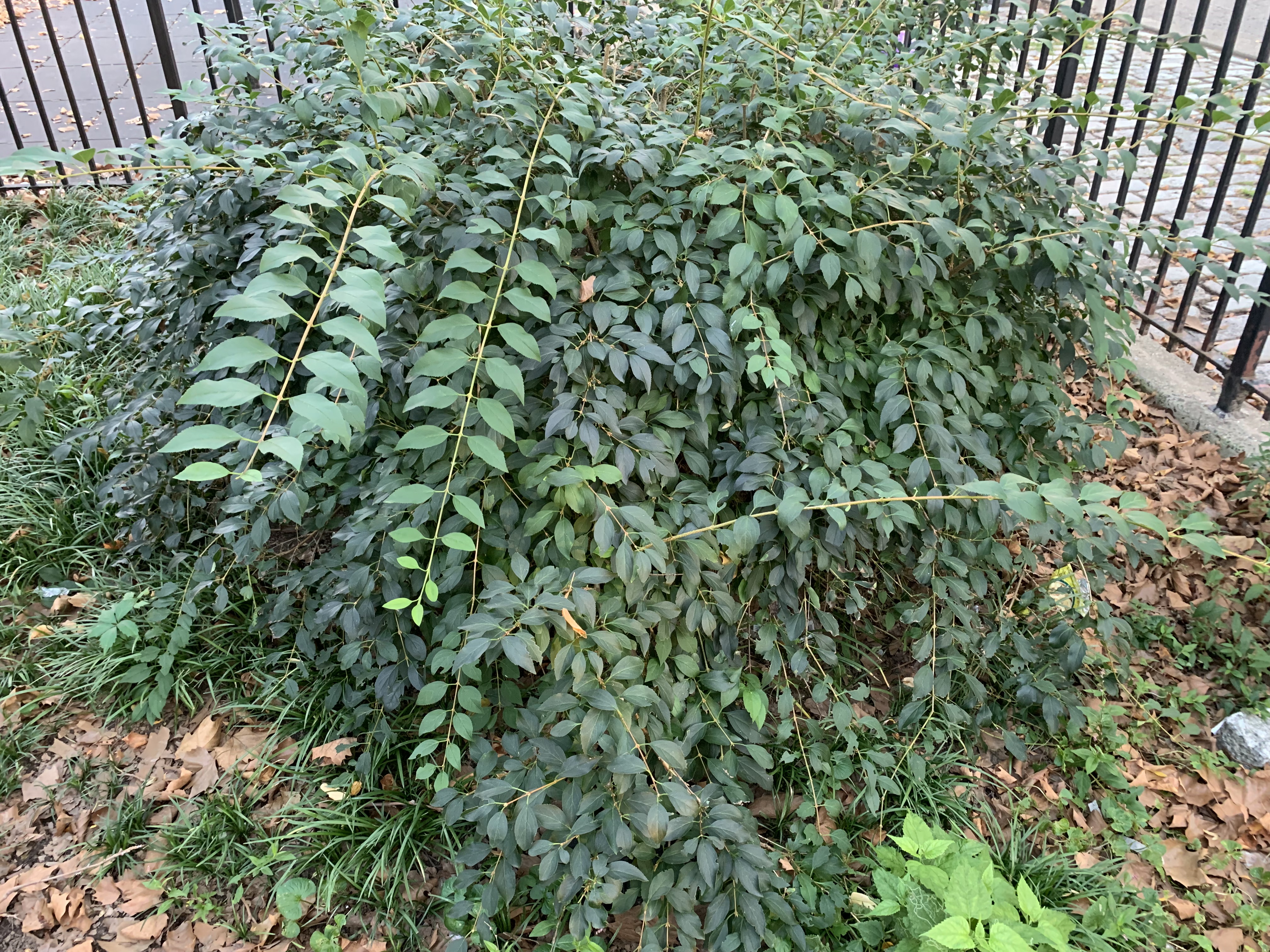
Chinese privet, Ligustrum sinense
Size:
The specimen is about 3 to 4 feet tall and about 6 feed in width. Date of Observation:
10/23/2023 - Mid-day.Context:
Located in Sternberg Park, it is used as landscaping. Of note, is located behind a fence and is not meant to be accessed by the public. Research Notes:
This specimen was introduced as an ornamental species but has become “invasive.” It is considered one of the worst “invasive” species in the US south.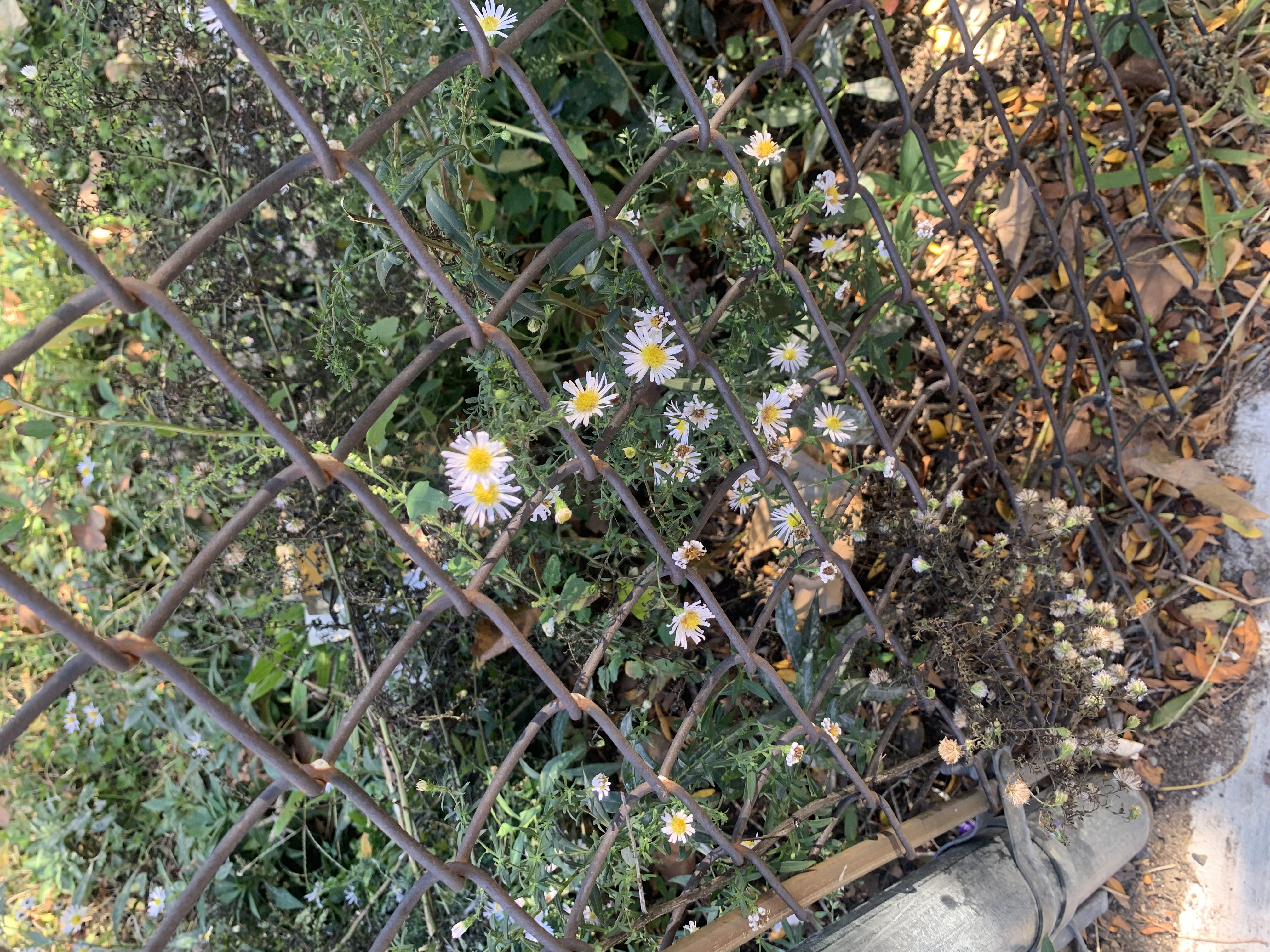
Annual fleabane, Erigeron annuus
Size:
The flowers are roughly the size of a quarter. The rest of the plant is similar in size to other small potted plants. Date of Observation:
10/23/2023 - Mid-day.Context:
Found in the edge spaces of the “green corridor” on Leonard street between Boerum and Moore streets. Research Notes:
Annual fleabane is considered a ubiquitous plant and is very common. The plant re-seeds aggressively and is a favorite of pollinators.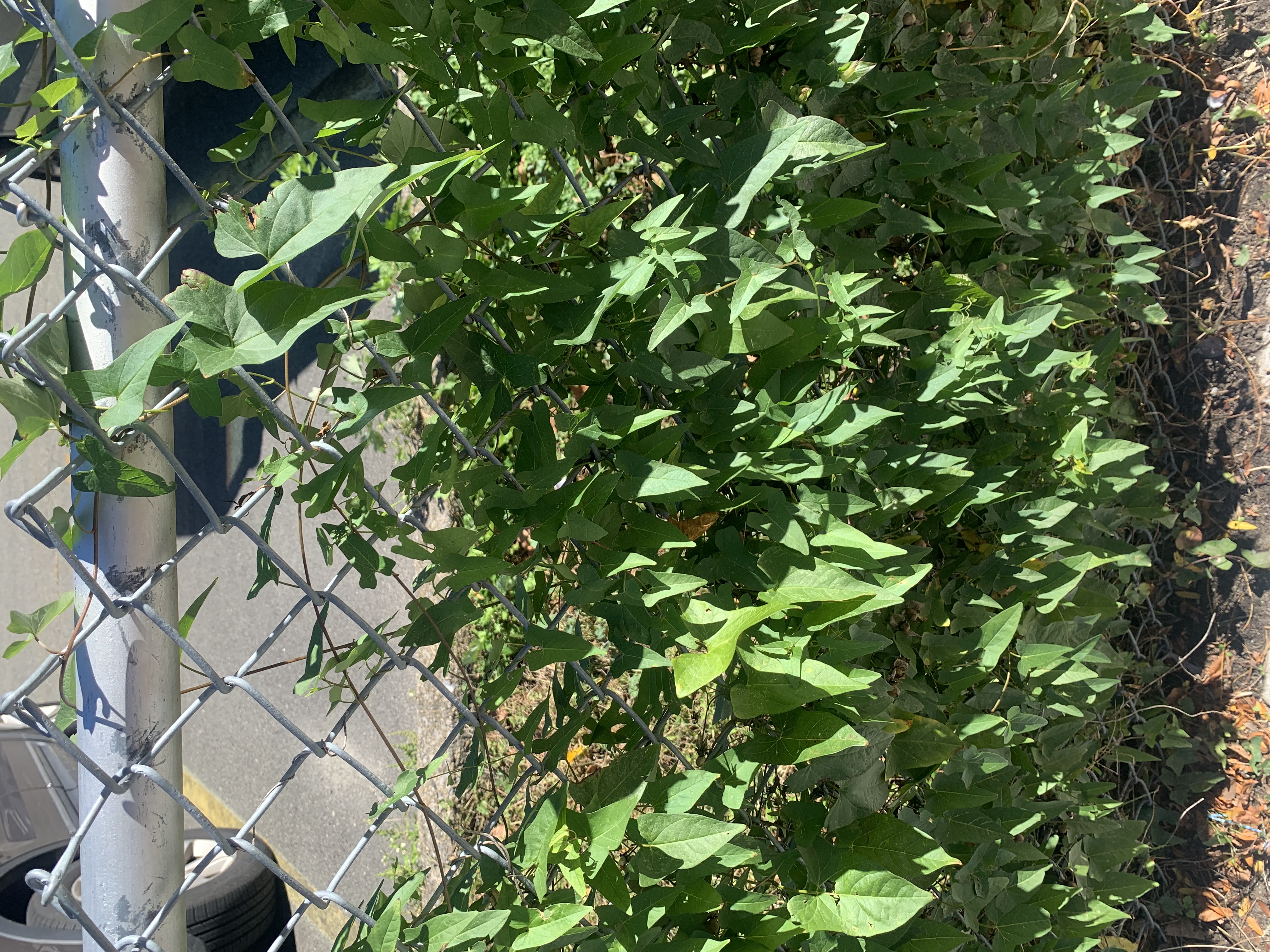
Hedge bindweed, Calystegia sepium
Size:
The leaves for this specimen of bindweed were the around 3 inches by 3 inches. Date of Observation:
10/23/2023 - Mid-day.Context:
Found in the edge spaces of the “green corridor” on Leonard street between Boerum and Moore streets.Research Notes:
Hedge bindweed is a perennial vine and part of the morning glory family (Convolvulaceae). Seeds are dormant and persist in the soil. Paper mulberry, Broussonetia papyrifera
Paper mulberry, Broussonetia papyriferaSize:
The leaves are between 6 inches and a foot in width. Date of Observation:
11/19/2023 - late afternoonContext:
Found in Sternberg Park. Growing in an unplanned way.Research Notes
The paper mulberry was introduced as an ornamental shade tree and quickly spread from Illinois to Massachusetts. In its “native” locales, it was traditionally used in paper making.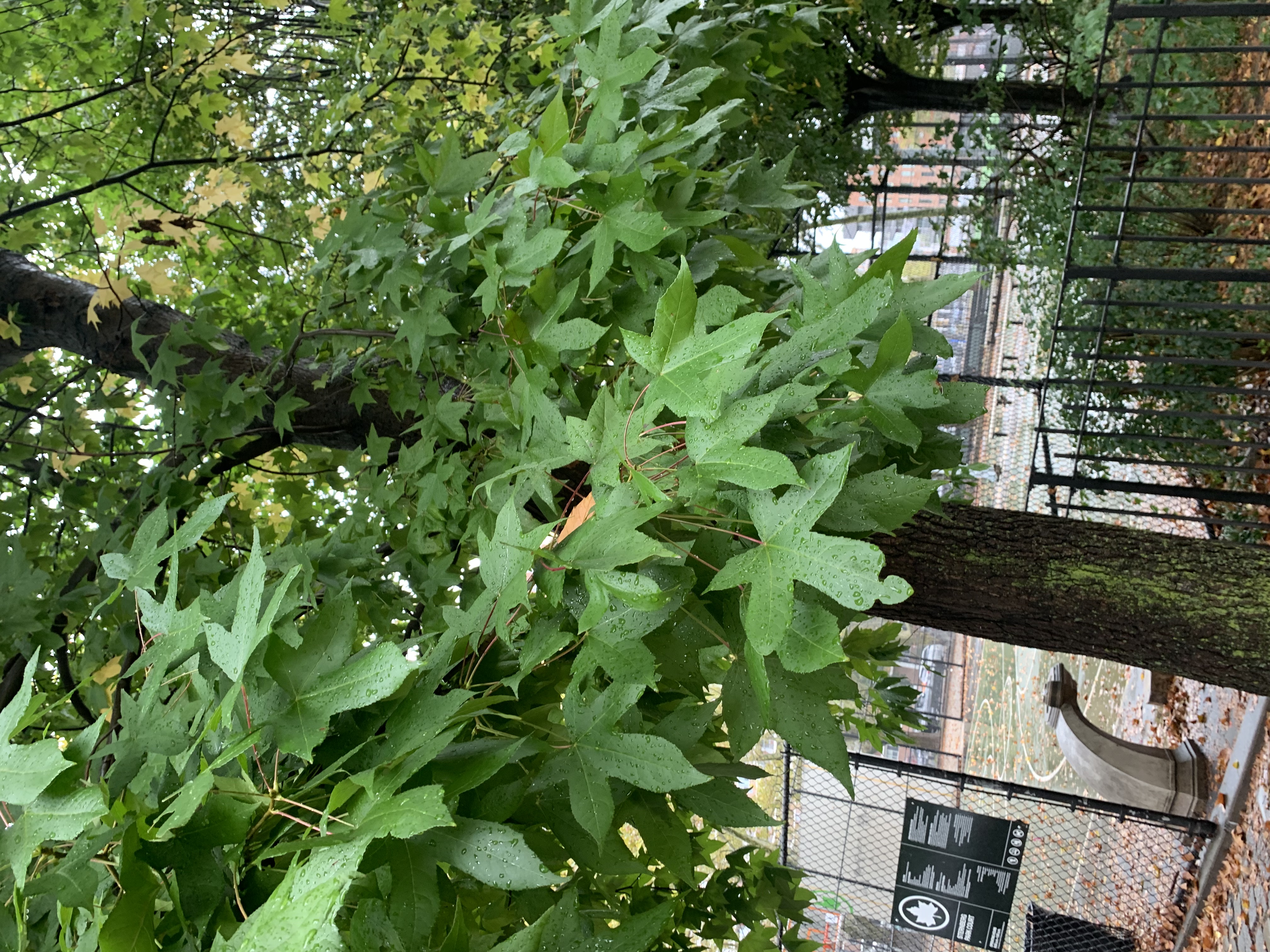 American sweetgum, Liquidambar styraciflua
American sweetgum, Liquidambar styracifluaSize:
Between 30 and 40 feet in height. Date of Observation:
10/23/2023 - Mid-day.Context:
This specimen was found in Sternberg Park as a part of the landscaping.Research Notes:
Sweetgum are a deciduous tree. It is able to withstand high levels of moisture. It is also known for producing brilliant colors in the fall. It is often used for lumber. The tree also produces a sap that can be used as gum (hence the name). 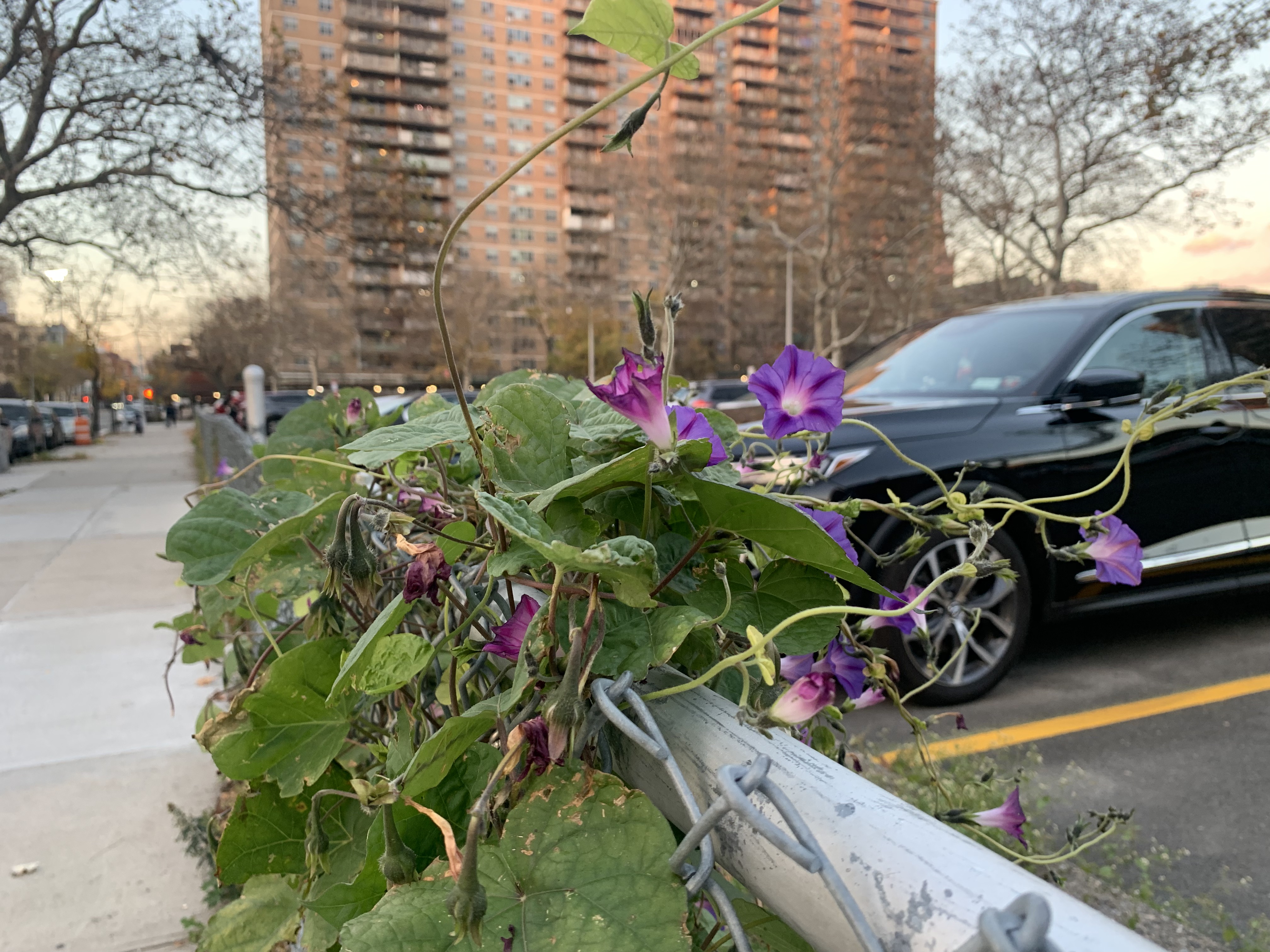
Common Morning Glory, Ipomoea purpurea
Size:
This common morning glory was spread over 12 square foot area of chain link fence. The flowers were small, no more than one inch in diameter. Date of Observation:
11/19/2023 - late afternoon.Context:
Found in the edge spaces of the “green corridor” on Leonard street between Boerum and Moore streets.
Research Notes
 Sweet mock orange, Philadelphus coronarius
Sweet mock orange, Philadelphus coronariusSize:
This sweet mock orange specimen was over 6 feet in width and around 5 feet in height. Date of Observation:
10/23/2023 - Mid-day.Context:
This specimen is used as landscaping in Sternberg Park. Research Notes:
This is a non-native species used frequently for landscaping. It has white flowers that bloom in early summer and produce a pleasant aroma. This plant is able to tolerate akaline and moist soils.
Virginia creeper, Parthenocissus quinquefolia
Size:
The leaves of the vine were between three and four inches in length, but the enture vine plant was spread across the ground. Date of Observation:
10/23/2023 - Mid-day.Context:
This specimen was found in Sternberg Park growing upon a lightpost. Research Notes:
This vine is a native species and supports pollinators when it flowers during the summer. It tolerates shade well and is a very resilient species. Bermuda grass, Cynodon dactylon
Bermuda grass, Cynodon dactylonSize:
Bermuda gras itself is not any larger than regular blades of grass, but this specimen has grown into a dense thicket. Date of Observation:
11/19/2023 - late afternoon.Context:
This specimen of bermuda grass is in the space allocated for a tree bed. The tree was hit by a car and uprooted in the Spring of 2022 and never replaced by the city. I speculate that the combination of birds dropping seeds and the high volume of pollinators in the “green corridor” resulted in the bermuda grass growing here. Research Notes:
Bermuda grass is a non-native perennial species. The species will go dormant in the late fall and winter.
Eastern grey squirrell, Sciurus carolinensis
Size:
This specimen appeared to weigh between two and three pounds. It was around six inches from nose to tail. Date of Observation:
10/20/23 - Afternoon. Context:
This specimen was found while en route to meet with another squirrell in a nearby tree. The specimen was observed during a very wet day and appeared to be collecting food for winter.Research Notes:
Eastern Grey Squirrels are crepuscular animals, meaning they are active predominantly during the twilight portion of a day. 
House mouse, Mus musculus
Size:
The house mouse is tiny. The leaves in the image provide an appropriate scale. It was likely the size of a plum (2 inches and less than a pound in weight). Date of Observation:
9/30/2023 - Afternoon.Context:
The specimen was found on the sidewalk on the outside of building #3. Research Notes:
The house mouse is not native to New York City and is believed to have originated in Iran, Afghanistan, Pakistan, or northern India. They have spread across the world with the aid of human development.
Common pigeon, Columbidae
Size:
The common pigeon appeared to be about five inches from beak to tailfeather. Date of Observation:
10/23/2023 - Mid-day.Context:
These pigeons were documented feeding just outside of Sternberg Park in a no parking zone. Research Notes
The pigeon is a confiding bird and has been a domestic companion of human beings for years. 
House sparrow, Passer domesticus